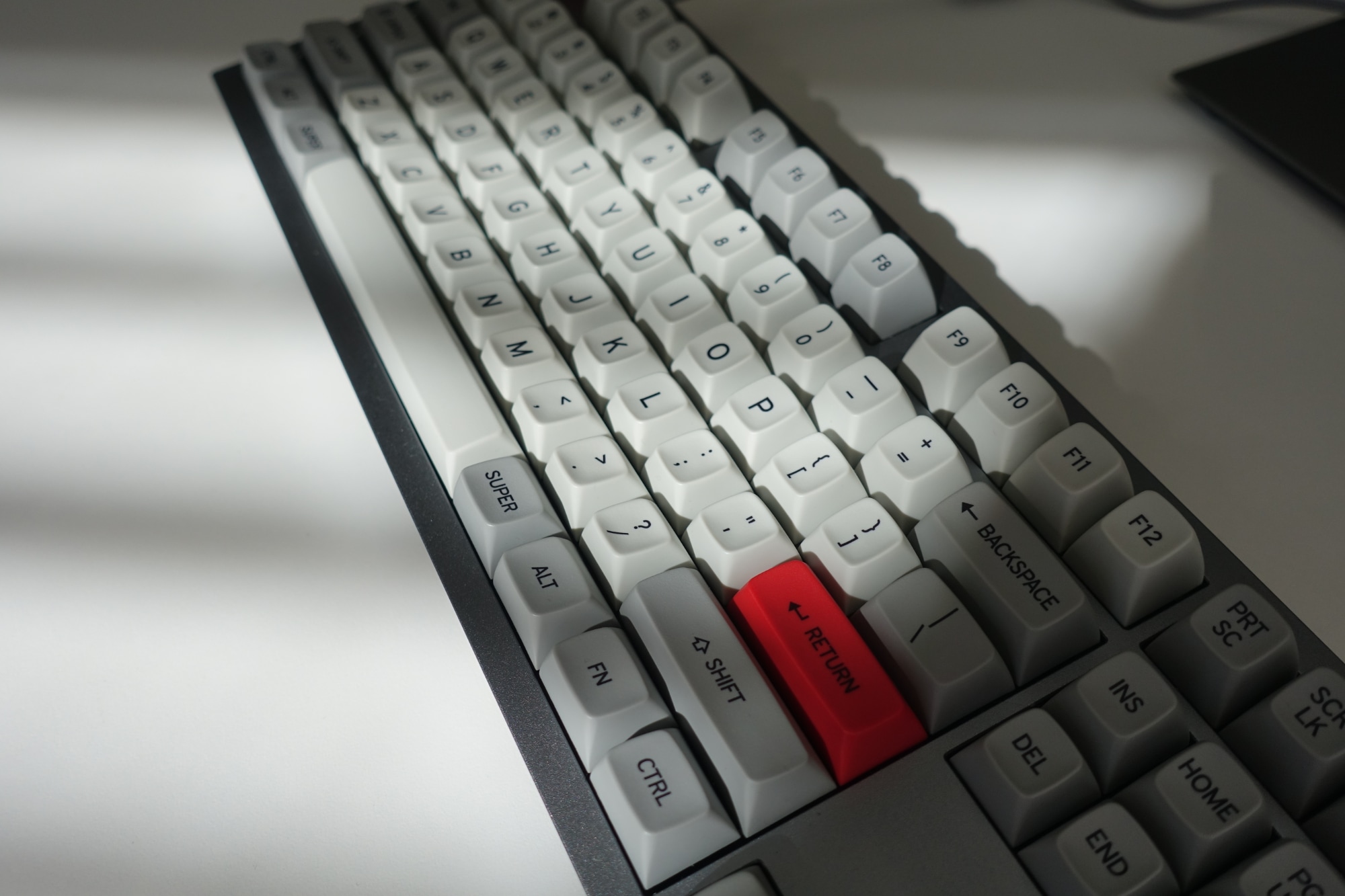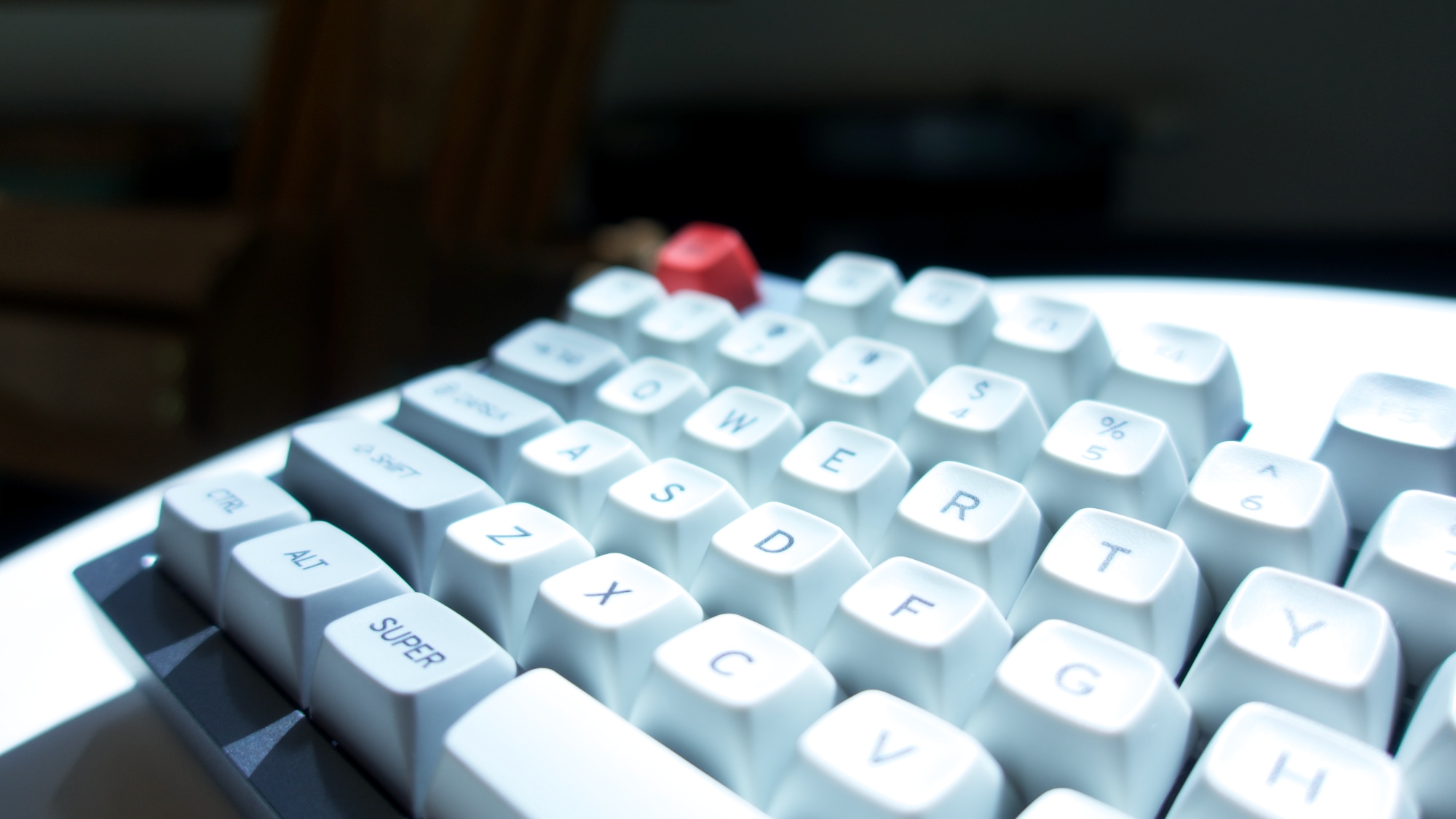Mechanical keyboard

My awesome mechanical keyboard
I spend many hours every day typing code, e-mails, and chat messages. The importance of a good keyboard is often overlooked. They are often remembered only when they fail terribly, like those butterfly keyboards on previous generation MacBook Pro. Or when one wants to avoid wrist pain and buys an ergonomic keyboard with curved surface.
So did I. Microsoft Surface Ergonomic Keyboard was the first I tried. Unfortunately, it didn’t bring the satisfaction I desired. Yes, it was much better than many built-in laptop keyboards. However, it appeared I had not any problem with wrists, and otherwise it was still boring flat membrane keyboard.
No, I don’t mean anything fancy like this LEGO compatible keyboard. I just wanted to have nice typing feedback.
Keyboards 101
That’s when I discovered the wonderful world of mechanical keyboards.
Wait, what are mechanical keyboards? The main difference is in switches, the small parts in each key, that register a press.
Membrane keyboards are used in laptops, many cheap external keyboards are membrane too. They have a pop-it like silicon bump under each key, which you need to push down to trigger a contact. These boards are usually almost flat (important for laptops), but their keys have very short travel distance and minimal feedback.
Mechanical keyboards have a small spring instead. They are usually taller (but can be quite low too). The combination of the travel distance, and the force needed to push the key (and its distribution!) provides unique typing experience, which everyone can tune to their needs.
And that’s not all, you can customize almost everything!
Form factor
The first and most visible customization is the number of keys and their layout. The number of keys is usually measured in percentages of a full keyboard with numpad block, which consists of somewhat around 110 keys. Most popular layouts are 60–80%, though some people go as low as 40%.
Some important glossary:
- TKL or Ten Keys Less is a standard keyboard without numpad. Actually, it has more the ten keys less (yep) and corresponds to 80%;
- Ortholinear keyboard has a strict grid of keys, without a half-key width shift that came from the typewriters;
- Split keyboard is, well, split in two parts for left and right hand (such keyboards are also almost always ortholinear too).
Switches
Switches are parts that register a press and signal your computer about it. This is the main difference of mechanical keyboard.
There are lots of choices, but some most popular are:
- linear (they are usually made from red plastic) — identical force feedback along the whole travel distance;
- tactile (brown) — noticeable bump at the lowest position;
- clicky (blue) — very loud, take these if you want to piss off your coworkers.
Keycaps
Keycaps are plastic caps put on top of switches. They can be made of different materials such as different plastics (ABS/PBT) or even aluminum. They also differ in colors and forms, especially their top, where you put your finger. Legends (symbols) are using different fonts and symbols, and they are printed with the help of a number of different technics.
Miscellaneous
Some other features that custom may or may not have:
- Wireless (Bluetooth) or wired (all modern boards use USB Type C) or both.
- Firmware customizable via dedicated software (QMK/VIA is the most popular open-source combination)
- Additional USB pass-thru ports, knob for volume control or small display for whatever you want.

My keyboard
How I built my keyboard
I’ve read a lot, but didn’t know where to start. Paying out a few hundred bucks for something I wasn’t sure I like, didn’t sound like a great idea. Luckily, I discovered Keychron. They are producing nice and affordable mechanical keyboards. I liked the K3 at first sight: it is a slim low-profile wireless keyboard, which comes pre-built with keycaps and switches. Ideal for the first time experience.
After a few months of usage, I found some flaws.
- First, linear switches appeared too easy to press accidentally. It sometimes happened when my hands were resting on the keys.
- Wireless setup sounds nice in theory. Though in practice, it means I need to charge the keyboard pretty often. And there is always a delay before the laptop wakes up, when I press a key, because they need time to re-establish Bluetooth connection. Given that I have a permanent workplace, I don’t need the keyboard to be easily transportable. Instead, I like that it is always connected to the monitor and ready to work.
- Low profile limits the key travel distance (which is not far from the membrane keyboard) and limits the choice of keycaps and alternative switches. For example, I started reading r/mk for inspiration (that was before I left Reddit completely) and noticed MT3 keycaps there. I also wanted some silent or quiet switches.
I finally had a picture of my dream keyboard. It should have a TKL layout, wired (USB Type C), aluminum case with some decent weight for stability. It should run on QMK firmware and have standard 3/5-pin hotswap sockets for easy modding. It may have a programmable knob, but it should be placed in a convenient place and be well integrated into the case. Things I don’t care about are lighting, which I turn off immediately anyway, and fancy cables.
Luckily, when I compiled this list, Keychron announced their Q3 keyboard, which ticked all the boxes. I only needed to wait several more months before it is available.
Final parts list:
- Keychron Q3 ANSI Silver Grey
- Gazzew Boba U4 62g silent tactile switches (stock)
- Durock V2 Stabilizers lubed with Krytox GPL 205 Grade 0
- Drop+Matt3o MT3 /dev/tty keycaps

Awesome keys
I’ve been using this keyboard for more than a year already and enjoy every key press. And this post was typed on this awesome keyboard, of course.
Subscribe to all blog posts via RSS
